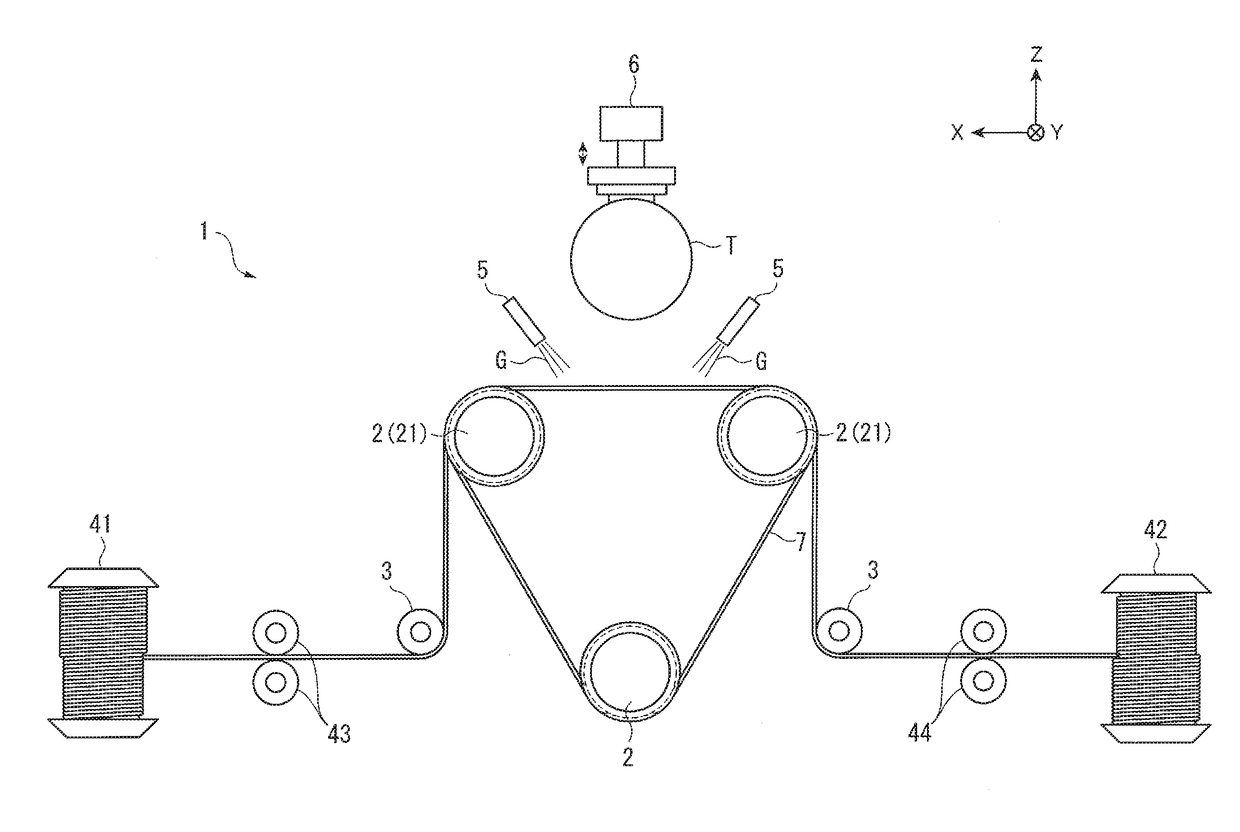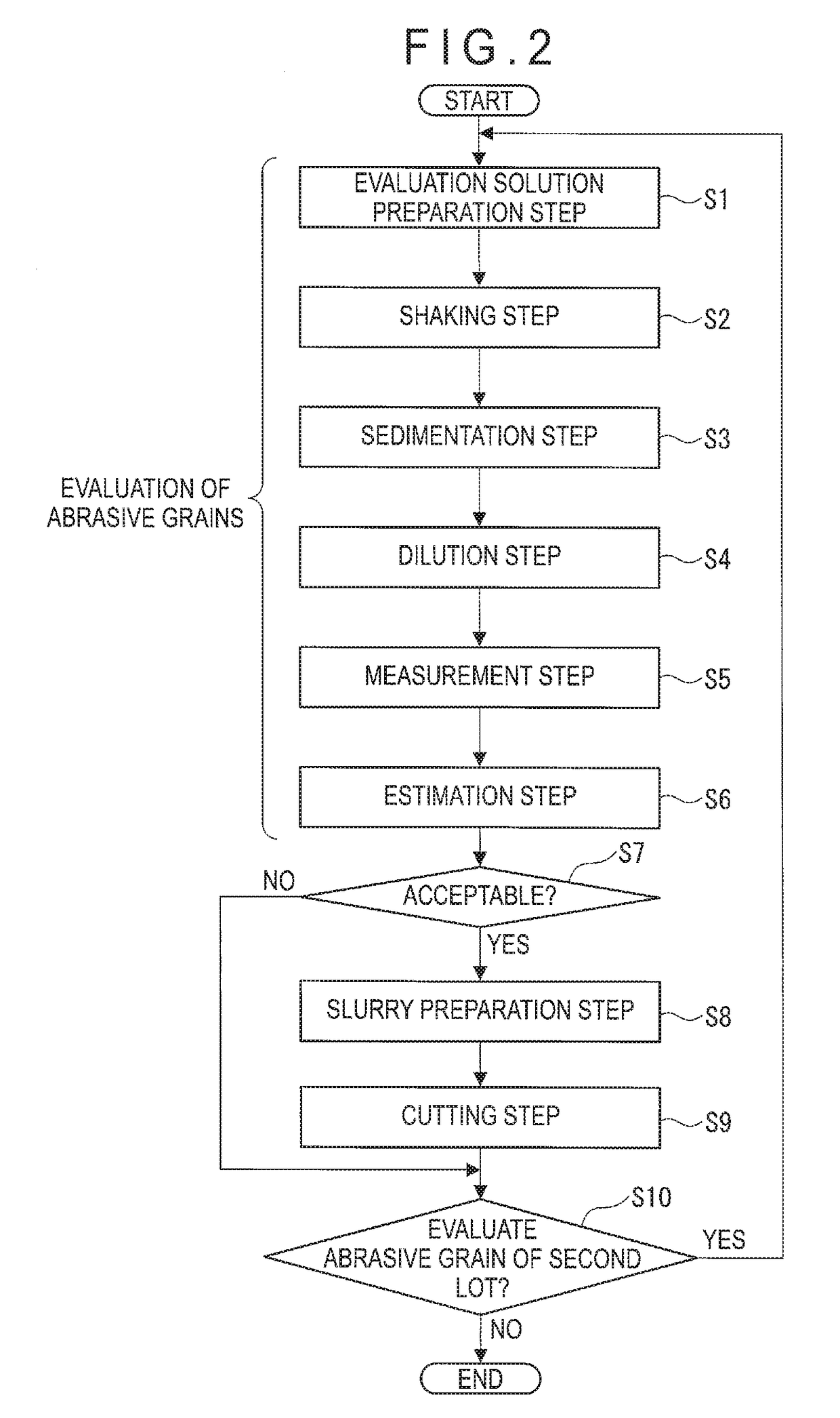Method for evaluating abrasive grains, and method for manufacturing silicon wafer
a technology of abrasive grains and manufacturing methods, which is applied in the direction of manufacturing tools, fine working devices, other chemical processes, etc., can solve the problems of deteriorating the cutting performance of wire saws and lowering the quality of silicon wafers, and achieves high-quality silicon wafers
- Summary
- Abstract
- Description
- Claims
- Application Information
AI Technical Summary
Benefits of technology
Problems solved by technology
Method used
Image
Examples
experiment 1
[0065]Initially, as the unused abrasive grains used for ingot-cutting slurry, abrasive grains A1, A2 manufactured by A company, abrasive grains B1, B2 manufactured by B company, abrasive grains C manufactured by C company, and abrasive grains D manufactured by D company were prepared. The production lot of the abrasive grains A1 was different from the production lot of the abrasive grains A2. Similarly, the production lot of the abrasive grains B1 was different from the production lot of the abrasive grains B2. The particle size of each of the abrasive grains was #2000.
[0066]Next, 30 gram of the abrasive grains A1 were mixed with 70 ml of pure water (solvent) through a manual operation of an operator to prepare an evaluation solution A1. Further, evaluation solutions A2, B1, B2, C, D were prepared under the same conditions as those in preparing the evaluation solution A1 except that the abrasive grains A1 were changed respectively to abrasive grains A2, B1, B2, C, D.
[0067]Then, the ...
experiment 2
[0071]As described above, the turbidity of the supernatant of the evaluation solution sometimes cannot be appropriately measured using a turbidity meter. Accordingly, it was checked whether or not the turbidity of the supernatant became so small as to be within the measurement range of the turbidity meter by lengthening the stand-still time after preparing the evaluation solution.
[0072]After preparing the same evaluation solutions A1,A2,B1,B2,C, D as those prepared in the Experiment 1 and the evaluation solutions were left still for 3, 12 and 24 hours at a normal temperature, the turbidities of the supernatants of the evaluation solutions were measured using the above turbidity meter. The results are shown in FIG. 4. The turbidity was also visually checked.
[0073]It should be noted that, when the stand-still time exceeds 24 hours, it becomes difficult to manage the receipt and stock of the abrasive grains during mass production. Accordingly, the maximum value of the stand-still time ...
experiment 3
[0076]In view of the results of the Experiment 2, it was checked whether or not the amount of the impurities could be appropriately estimated using the turbidity meter by diluting the supernatant of the evaluation solution even when much amount of impurities were present in the abrasive grains.
[0077]After the evaluation solution A1 identical with that in the Experiment 1 was prepared in three colorimetric tubes and was left still for 3 hours at a normal temperature, the supernatants in the respective colorimetric tubes were diluted twofold, fivefold and tenfold with pure water. The turbidities of the diluted supernatants were measured using the above turbidity meter. Similarly, the turbidities of the supernatants of the evaluation solutions A2, B1, B2, C, D diluted twofold, fivefold and tenfold with pure water were measured using the turbidity meter. The results are shown in FIG. 5.
[0078]As shown in FIG. 5, when the solutions were diluted twofold with pure water, the measured values...
PUM
 Login to View More
Login to View More Abstract
Description
Claims
Application Information
 Login to View More
Login to View More - R&D
- Intellectual Property
- Life Sciences
- Materials
- Tech Scout
- Unparalleled Data Quality
- Higher Quality Content
- 60% Fewer Hallucinations
Browse by: Latest US Patents, China's latest patents, Technical Efficacy Thesaurus, Application Domain, Technology Topic, Popular Technical Reports.
© 2025 PatSnap. All rights reserved.Legal|Privacy policy|Modern Slavery Act Transparency Statement|Sitemap|About US| Contact US: help@patsnap.com



